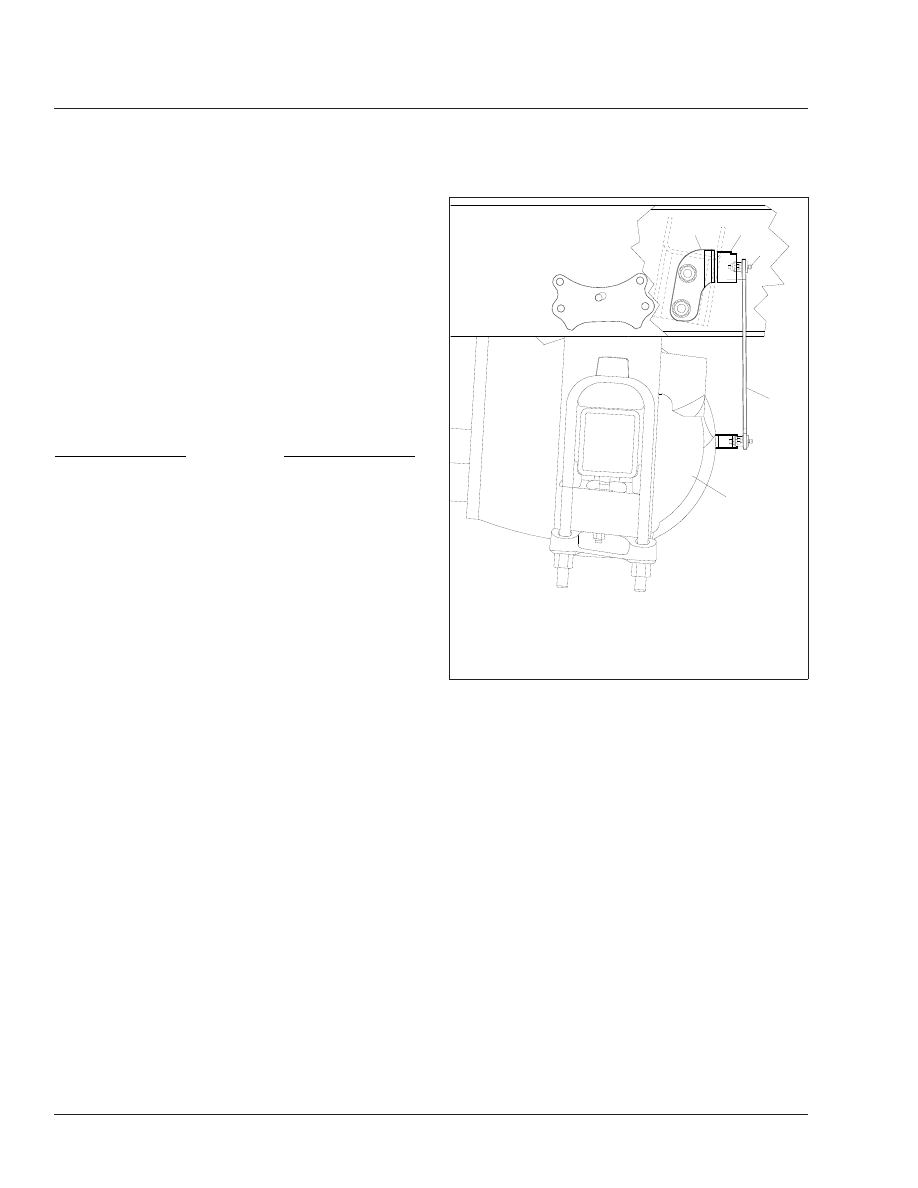Freightliner Coronado 132 / 122SD. Manual - part 16

IMPORTANT: To prevent voiding the warranty
on Barksdale height-control valves, note the fol-
lowing:
• Do not overtighten the bolts in the Barksdale
height-control valve housing. The bolts should
not be loose, and should not require tightening.
Only if necessary, tighten the valve housing
bolts 45 lbf·in (500 N·cm). Any damage to the
valve housing will void the warranty.
• Do not attempt to disassemble the Barksdale
valve body or the control lever. There are no
serviceable parts in the valve, and any disas-
sembly will void the warranty.
NOTICE
When removing or loosening a Barksdale height-
control valve from a mounting bracket, always
hold the valve-side mounting studs in place with
an Allen wrench while loosening or tightening the
nuts that attach the valve to the bracket. Because
the mounting studs are threaded into the valve
body, loosening the nuts without holding the
studs can tighten the studs, which can crush the
valve body and damage the valve. Conversely,
tightening the nuts without holding the studs can
back the studs out, causing a separation of the
two halves of the valve body, and possibly a leak.
1.
Park the vehicle on a level surface, using a light
application of the brakes. Do not apply the park-
ing brakes. Shift the transmission into neutral,
and build the secondary air pressure to at least
100 psi (690 kPa). Shut down the engine.
2.
Mark the location of the front and rear tires on
the floor, and chock the tires on one axle only.
3.
Check that the height-control valve vertical link-
age is connected and oriented correctly.
NOTE: The stud bolt that fastens the height-
control valve horizontal lever to the vertical link-
age is oriented correctly when the linkage rod is
vertical, as viewed from the side of the vehicle;
see
. The rod may be on the forward or
aft side of the lever to get it to be vertical.
4.
Measure the distance from the axle stop to the
top of the axle U-bolt pad. The correct distance
is determined by the axle and suspension con-
figurations; refer to Group 32 of the 122SD and
Coronado Workshop Manual for details.
5.
If the axle stop measurement is not correct, see
Group 32 of the 122SD and Coronado Work-
shop Manual for adjustment procedures.
6.
Apply the parking brakes, and remove the
chocks.
Chalmers Suspension
1.
Chock the front tires, place the transmission in
neutral, and release the parking brakes.
2.
Power wash the suspension, or clean it with a
hard-bristle brush before performing a visual in-
spection.
3.
Inspect the rubber bushings for cracks or other
damage.
Try to move the torque rod ends using your
hands only, and check for any free-play. If free-
play is felt, replace the torque rod end bushing.
Do not use a pry bar to check for free-play. Use
01/12/2000
f320562a
1
2
3
4
5
1.
Valve Mounting Bracket
2.
Height-Control Valve
3.
Stud Bolt
4.
Linkage Rod
5.
Axle
Fig. 6, Typical Barksdale Height-Control Valve
Installation (side view)
Suspension
32
32/4